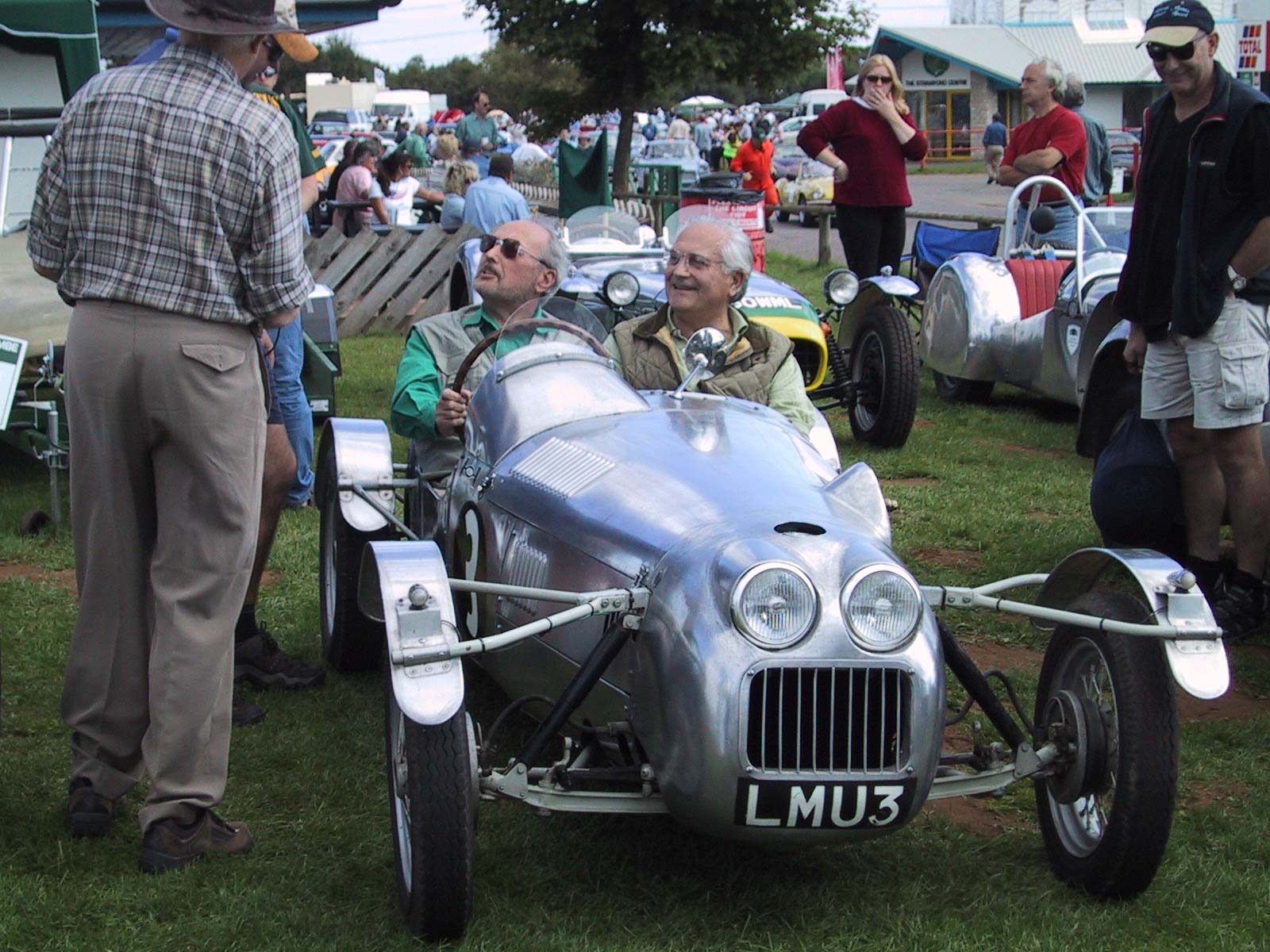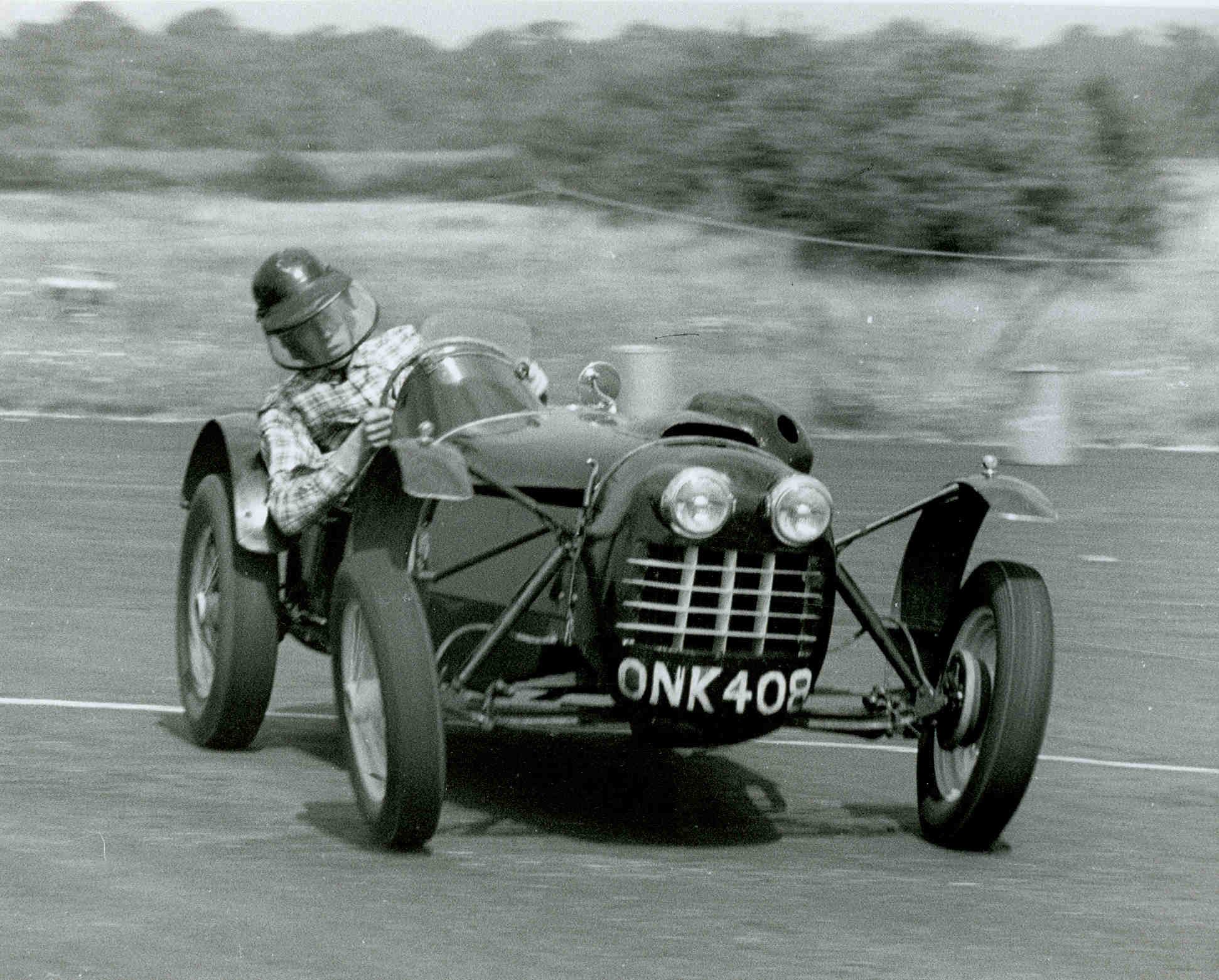|
THE MARK III:
The 750 Formula set out to be one of the least expensive in the sport of
car racing and in order to keep costs down the regulations made it
compulsory to use many Austin Seven parts like chassis, rear axle, engine
gearbox and propshaft etc. In addition the cars had to be road worthy and
capable of being driven to and from the circuit. Selling the Mark II to
trials driver Mike Lawson as well as dispossing of the Mark I, Colin was
in funds enough to buy an Austin Seven saloon for the basis of the Mark
III, and have money to start on the new project in Vic Williams’s lock-up.
No sooner had he started than he met the Allen brothers, Michael and
Nigel, two dental students who were neighbours of Hazel's and whose
parents had a very well equiped garage. In no time at all, Colin had
convinced them that what they wanted to do most was to make themselves a
Mark III Lotus each, to be built at the same time as Colin’s own, in their
garage!
CHASSIS:
The Mark III chassis was to be much stiffer than the earlier cars having,
instead of flat aluminium bonded plywood, additional tubes welded to form
a triangulated ‘cage’ bolted to the front ‘A’ frame. This cage needed to
be removed before any serious work could be done to the engine but this,
as it turned out, was a small price to pay for what was to be streets
ahead in chassis design terms, compared with the rest of the competition
in the 1951 750 Formula championship. As with the previous cars there was
a split Ford Eight beam axle with a flattened semi eliptical spring
providing independent swing-axle front suspension. A great deal of care
was taken to ensure that everything was as light as possible; in fact the
completed car only weighed 815lbs (370Kg).
TRICK ENGINE:
Whilst the body and chassis were far ahead of the other competitors, the
real success lay with the performance of the engine. By this, his third
year of competition, Colin realised that interpretation of the regulations
was all important in order to make a winning car. The 750 Formula rules
required the use of a standard Austin Seven side-valve cylinder block with
it’s ‘siamesed’ inlet ports. In other words the four cylinders and four
inlet valves were served by only two inlet ports. From a technical point
of view this was inefficient because with a 1-3-4-2 firing order the two
adjacent cylinders fired immediately after one another and would rob each
other of the correct amount of incoming fuel/air mixture.
Colin’s answer was to ‘de-siamese’ the ports, not by altering the
side-valve block, but by using a specially made four-piped but two-branch
manifold. Fabricated of sheet steel, the two rectangular-sectioned pipes
were each divided into two and this division protruded into the two
enlarged ‘siamese’ inlet ports within the block where they were ‘sealed’
in with asbestos strip. A hugh twin-choke Stromberg carburettor from a
Ford V8 was fitted! So to the casual eye it looked like a modified
two-pipe inlet manifold. Although no power output was ever documented, the
results were devastating as the Mark III simply ran away from everything
in it’s class that year. With a top speed of around 90 mph from a crude
749cc side-valve engine designed in 1922, most 5 to 10 lap races were won
by half a lap.
At the end of the season the inevitable happened; the rules got changed
and the following year ‘de-siamesed’ ports were banned! Successes on the
track meant that Michael and Nigel Allen’s cars were not going to be
completed as any progress on them was thwarted to keep Colin on the track.
It had been decided that Colin would be the driver in all the 750 Formula
Championship races whilst Michael, Nigel and occasionally Hazel would
drive in non-championship events. By the end of the season it was clear
that the arrangement they had wasn’t going to work and Nigel decided to
concentrate on dentistry.
|


 Nigel and Michael Allen in the Lotus Mark III Castle Combe
2003.
Nigel and Michael Allen in the Lotus Mark III Castle Combe
2003.
 The Lotus Mark IIIb.
The Lotus Mark IIIb.
 The Lotus Mark IV.
The Lotus Mark IV.